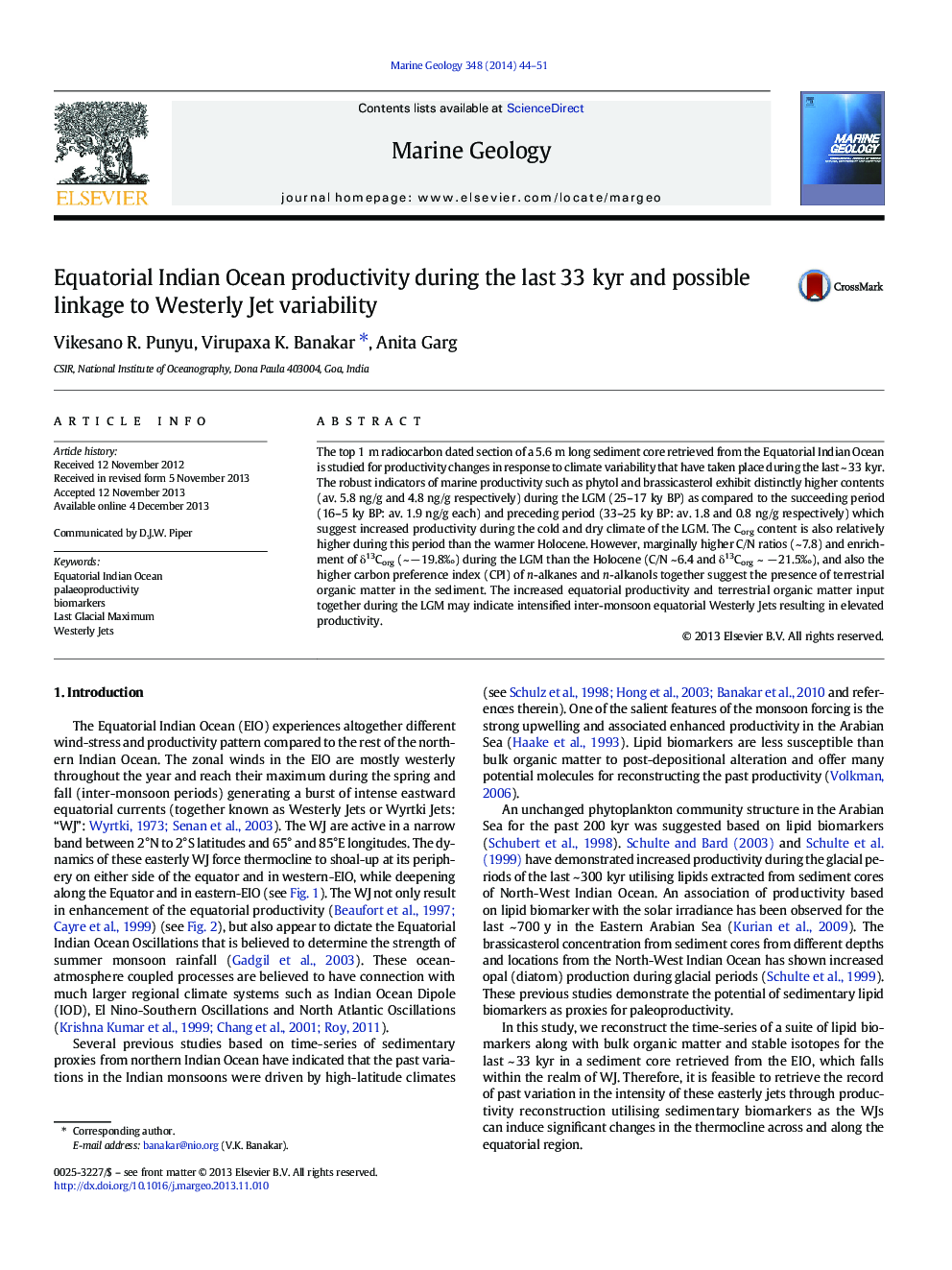| Article ID | Journal | Published Year | Pages | File Type |
|---|---|---|---|---|
| 6441769 | Marine Geology | 2014 | 8 Pages |
Abstract
The top 1 m radiocarbon dated section of a 5.6 m long sediment core retrieved from the Equatorial Indian Ocean is studied for productivity changes in response to climate variability that have taken place during the last ~ 33 kyr. The robust indicators of marine productivity such as phytol and brassicasterol exhibit distinctly higher contents (av. 5.8 ng/g and 4.8 ng/g respectively) during the LGM (25-17 ky BP) as compared to the succeeding period (16-5 ky BP: av. 1.9 ng/g each) and preceding period (33-25 ky BP: av. 1.8 and 0.8 ng/g respectively) which suggest increased productivity during the cold and dry climate of the LGM. The Corg content is also relatively higher during this period than the warmer Holocene. However, marginally higher C/N ratios (~ 7.8) and enrichment of δ13Corg (~ â 19.8â°) during the LGM than the Holocene (C/N ~ 6.4 and δ13Corg ~ â 21.5â°), and also the higher carbon preference index (CPI) of n-alkanes and n-alkanols together suggest the presence of terrestrial organic matter in the sediment. The increased equatorial productivity and terrestrial organic matter input together during the LGM may indicate intensified inter-monsoon equatorial Westerly Jets resulting in elevated productivity.
Related Topics
Physical Sciences and Engineering
Earth and Planetary Sciences
Geochemistry and Petrology
Authors
Vikesano R. Punyu, Virupaxa K. Banakar, Anita Garg,
